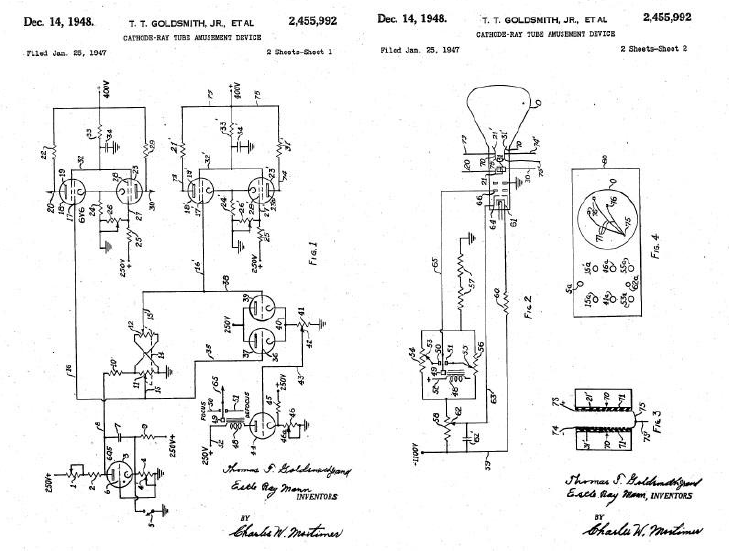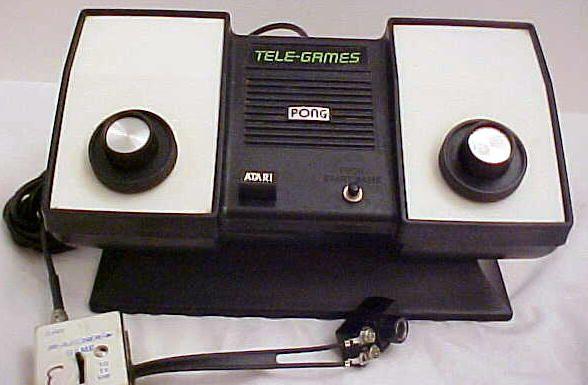The history of video games... This topic is far too large to cover in detail. Therefore, this blog will just share my thoughts on some topics, hopefully picking bits out of the timeline that I feel are significant enough to mention; I'll see where it takes me!
 |
| The difference Engine |
In addition, I think it was the "Jacquard Loom"? Which was the first loom to run automatically using a pre-written program using punched card (1801). I found this particularly interesting due to the ingenuity of it.
Furthermore, I knew that technology had gotten much smaller in a short period of time, but it was intriguing to see that we've gone from taking up entire rooms for one computer, to filling entire rooms with hundreds of computers, all within 1 century. Another interesting point to note was the vast range of products created by Xerox; including the Xerox Ethernet, and the 'ergonomically designed' mouse... (I say that sarcastically of course). Michael then went on to show us the very first first person shooter called "Maze War", released in 1973. This was developed by 'Steve Colley', and it was first played on the "Xerox Star"; being the first multiplayer game due to the creation of the Ethernet. To some it up quickly, I loved to hear a swift run-through about the development of games in technology, and I felt proud to potentially be part of the next generation to create video games.
 |
| Schematic - Cathode-Ray Amusement Device |
 |
| A.S. Douglas & "OXO" Game |
1954-1957 included: The first blackjack program, crated on an IBM-701 computer, "Hutspiel" was designed by the US military whereby blue and red players (Soviet and NATO commanders) battle it out, Arthur Samuel shows off his checkers program on national TV, and Alex Bernstein scripts the first chess program on an IBM-704 computer, capable of evaluating four half-moves ahead. However, none of these released to the public as actual games. In addition, David Rosen, former US Korean war veteran notices the rise in interest of mechanical coin-operated games on US military bases in Japan, and went on to start "Service Games" to export them to Japan. It wasn't until the 1960's that he made his own coin-operated games and adopted the name "SEGA", derived from the original "SErvice GAmes". - Ref 5.
 |
| Tennis For Two |
 |
| Space War |
 |
| "The Brown Box" Sketch |
More than a decade later from his initial idea, Ralph Baer invents the first video game console that works on a television set - "The Brown Box". The game that was played on it was called "Chase" and it consisted of two squares controlled by two players, chasing each other on the screen. Ralph and his team then add a light gun, and developed a total of 12 games for the 'Brown Box'. This was patented 1 year later in 1968. Baer & his team showed their work to a company called "Magnavox", who then released "Odyssey"; the first economically viable console in 1972. However, many dealerships failed to see its potential and turned it down, plus, a rumor spread that it only worked on Magnavox TV's, damaging potential sales.
 |
| Tele-Games - Pong |
 |
| space invaders - Atari 2600 |
A little extra thought I'd like to explore are the factors that drive the technology to advance and become better. Before all of the video games we've come to know and love, people lived their lives without the entertainment we have access to now. We as human beings don't need computer games, and consoles etc, however, ever since the popular games hit the market (i.e. Pong, Space Invaders, Tennis for Two), the demand for these types of games has risen massively. As always, as demand rises, development rises, and over the years, they have become such a big part of our lives, we almost need it in order to get away from daily stressors in life. As a side note, a big factor driving the technology is money, everything is about making money, making the next best selling thing to generate profits. However, you can't make the next best seller is it doesn't improve on what has already been done, or is something original...
As computers became more apparent for almost everything, it is only in our nature to improve on it and make it better & faster. The better the computers, the more popular, the more people could contribute to development. "A true creator is necessity, which is the mother of invention" - Ref 6 The republic, book II, 369c, Plato. People started to rely heavily on computers, and so we need them to be reliable, efficient, and fast. This lead to a huge improvement in the physical technology; chips, circuit boards, resistors have all gotten smaller and more efficient. In addition, the constant need to improve on what has been done before, inspires others to do better - Thus, driving improvements not only on graphics, gameplay, storyline etc, but the power of the electronic components we're using. These kind of changes are only going to continue, and it's happening faster than ever, who knows what the games we play in 20 years time will be like? Would it make today's graphics look like Space Invaders?
Thank-you for following along up until this point, I will continue the timeline at a later date :)
References:
1-http://content.time.com/time/interactive/0,31813,2029221,00.html
2-http://www.make-video-games.com/make-video-games-articles/a-brief-history-of-video-games.htm
3-http://www.icheg.org/icheg-game-history/timeline/
4-http://inventors.about.com/library/inventors/blcomputer_videogames.htm
5-Leonard Herman, Jer Horwitz, Steve Kent, Skyler Miller. (2002). The history of video games.
6-The republic, book II, 369c, Plato.
Image Ref:
http://img.gawkerassets.com/img/186w2tvup4yuupng/original.png
http://iasl.uni-muenchen.de/links/GCA_ill193.png
http://www.gamerobs.com/geekames/fichiers/2010/7/6/1278426382.jpg
http://www.bnl.gov/coreImages/D2231008_TENNIS4TWO-300px.jpg
http://img.bhs4.com/C0/1/C01F477814B746ACA2C015152DA1DD82F9920A95_large.jpg
http://www.ralphbaer.com/video_game_history.htm
http://atariage.com/forums/uploads/monthly_06_2010/post-17711-127736023296.jpg
http://nodebox.net/node/documentation/concepts/subnetworks-space-invaders.png
No comments:
Post a Comment